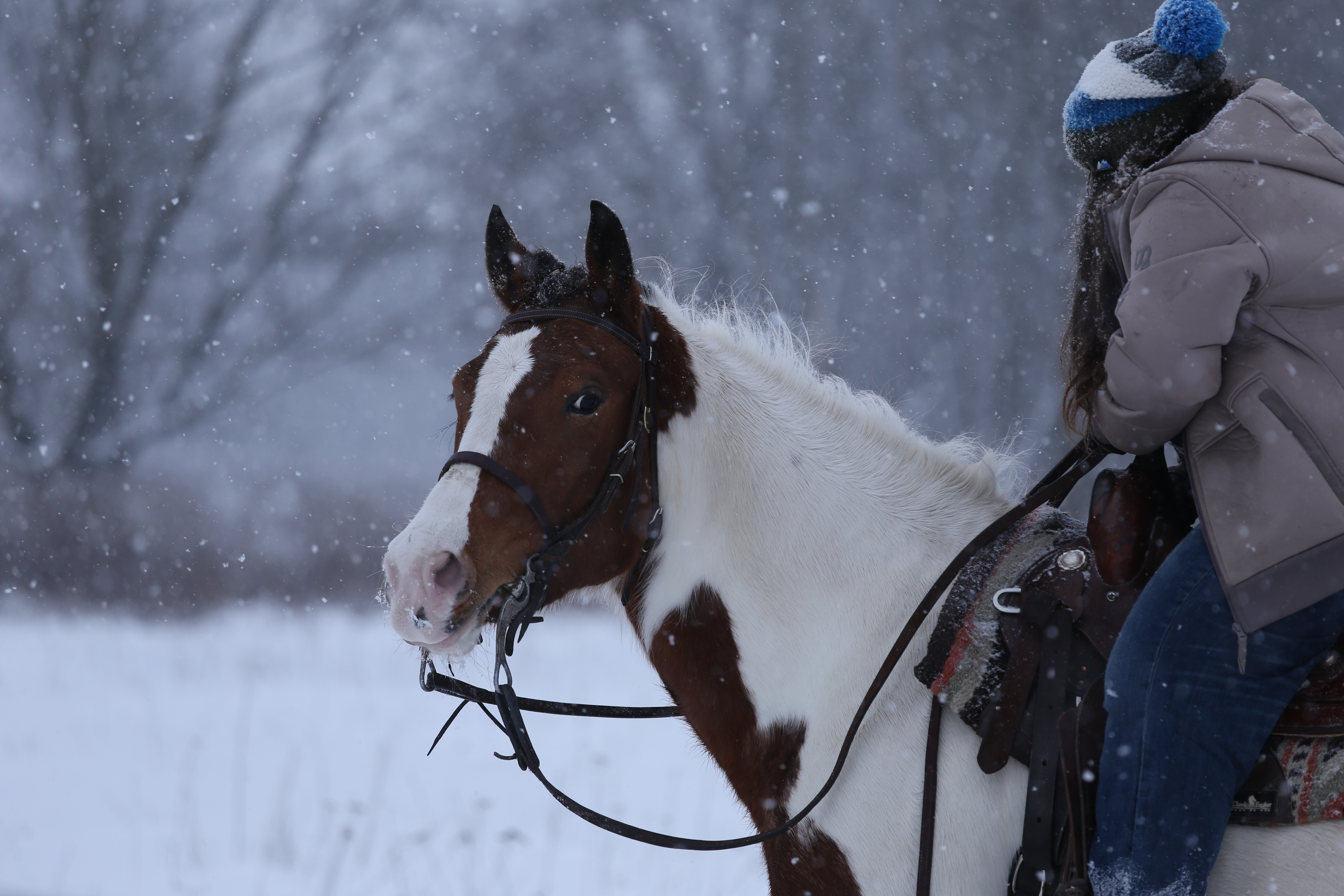
If you live in a cold-weather climate, you know how challenging riding through winter can be. Here are a few tips for taking the chill off barn and riding time.
1. Wear layers.
Before you head out to the barn, know whether you’re just going out to feed and check on the horses, or if you’ll be riding. If you’re not doing strenuous barn chores or schooling your horse, wear heavier clothes. And, if you are going to be getting your heart rate up and working hard, dress in layers.
Wear a lightweight base layer that’ll wick sweat away from your skin (polypropalene or silk are two options) then follow that with a middle layer of wool, or a synthetic that insulates without adding a lot of bulk. A jacket system that has a zip-in vest or jacket offers even more options.
2. Pack smart.
If you’ll be trail riding, pack a small waterproof container or ziplock bag that has matches, an extra layer of warmth, and a “space blanket.” Boating supply companies offer small kits that are waterproof and crushproof, and can usually be slipped into a saddlebag or fanny pack.
3. Grooming time.
A good grooming session before you ride will warm you up and will help warm your horse’s muscles, too. During your grooming routine, check your horse’s hooves for snow or ice if he’s been outdoors. Pick out his feet, then spritz with cooking spray or coat with Vaseline to keep snow and ice from packing into his feet. While you groom your horse, wear your horse’s bridle under your jacket to help warm the bit, or wrap it in gel hand warmers. Or, check out The Bitten Store’s bit warmer, which’ll double as a body warmer or can slip into your pocket as a hand warmer.
6. Cool off.
Plan extra time to cool your horse down after a ride. If your horse is clipped, consider using a quarter sheet–it’ll drape over his hindquarters and keep him a little warmer during cold-day rides.
7. Dress for the ride.
If you wear insulated boots, make sure you’re able to move them easily in the stirrups. Consider ordering oversized stirrups for use during the winter months. Try gel-pack foot warmers to protect against popsicle toes. Take time to stretch and warm your muscles before climbing into the saddle. And give your horse plenty of time to warm up before you start a strenuous schooling session.
9. Hydrate.
If you’re going on a long ride, wear a Camelbak (drink delivery system that you wear like a backpack) or a similar product to carry water. It’s easy to get dehydrated in the winter, and dehydration makes you more susceptible to hypothermia and frostbite. Water is a concern for your horse, too. Studies show that when they’re offered warm water, horses will drink more in the winter than if their water is ice cold. Keep an eye on water tanks and buckets (make sure they’re clean and ice-free). Decreased water intake can increase the risk for colic.
11. Take a break.
On really cold days, take a riding break. Check-in on your horse, then grab your tack and head to a warm tack room, or your house, and do a little cold-day cleaning. Wash bits (Listerine makes a great bit cleaner and disinfectant), clean headstalls and saddles, and check for any worn leather or broken buckles.
12. Safety first.
Do a safety check. Walk through the barn and pasture, checking for ice and hazards. Mix sawdust and de-icer to both melt ice and absorb moisture, and double-check water lines when frigid temps are predicted.
13. Visualize summer.
Sometimes, staying motivated requires goal setting. Think about goals for yourself and your horse, plan to attend some winter clinics and horse expos, and make a month-by-month list of what you’ll do to make your goals come true.
14. Enjoy your horse.
Even if you only have time for a deep whiff of eau d’equine or you just sit and listen to barn noises for a while, it can help recharge your batteries for that next sparkling winter day, when winter riding is at its best.






